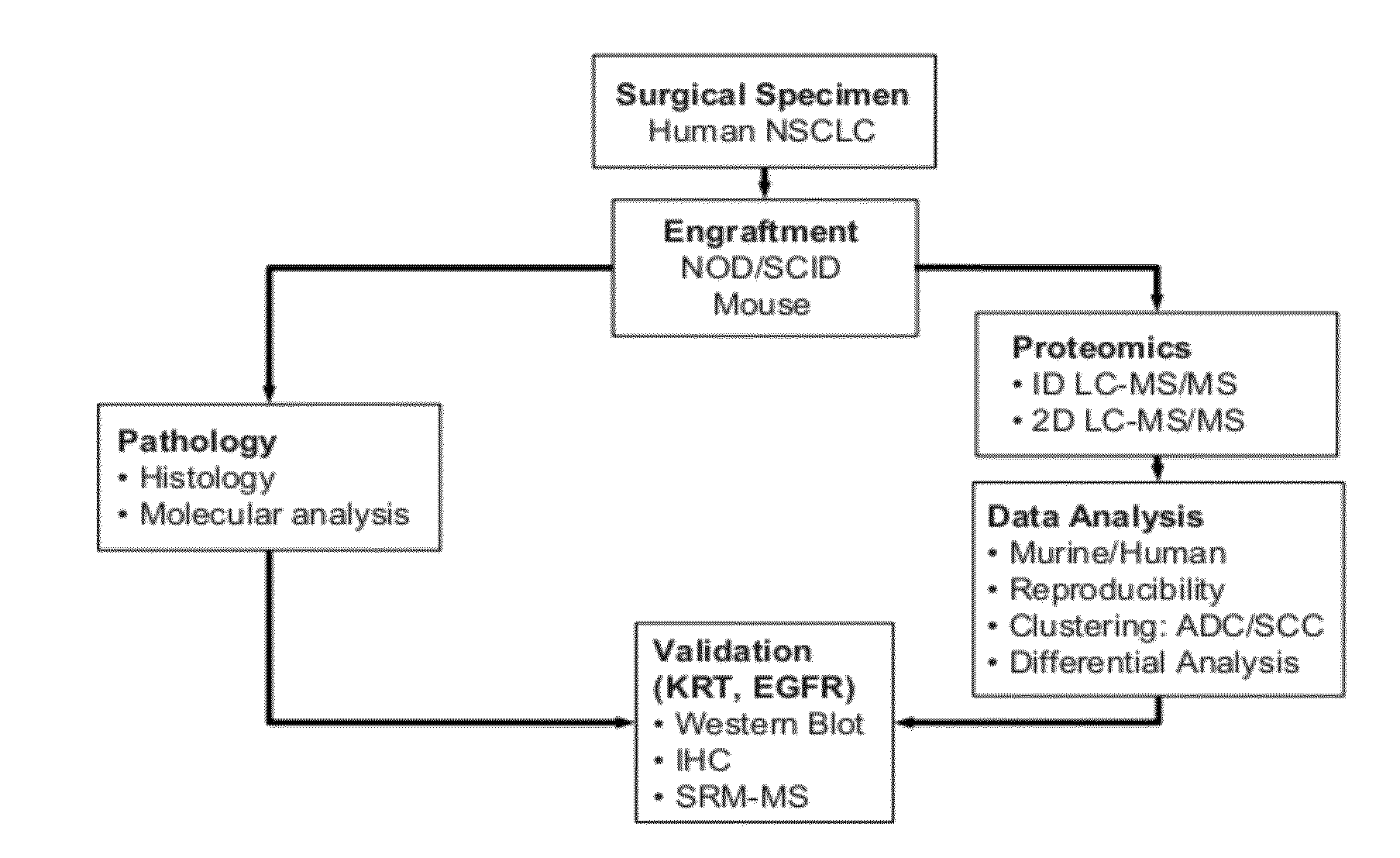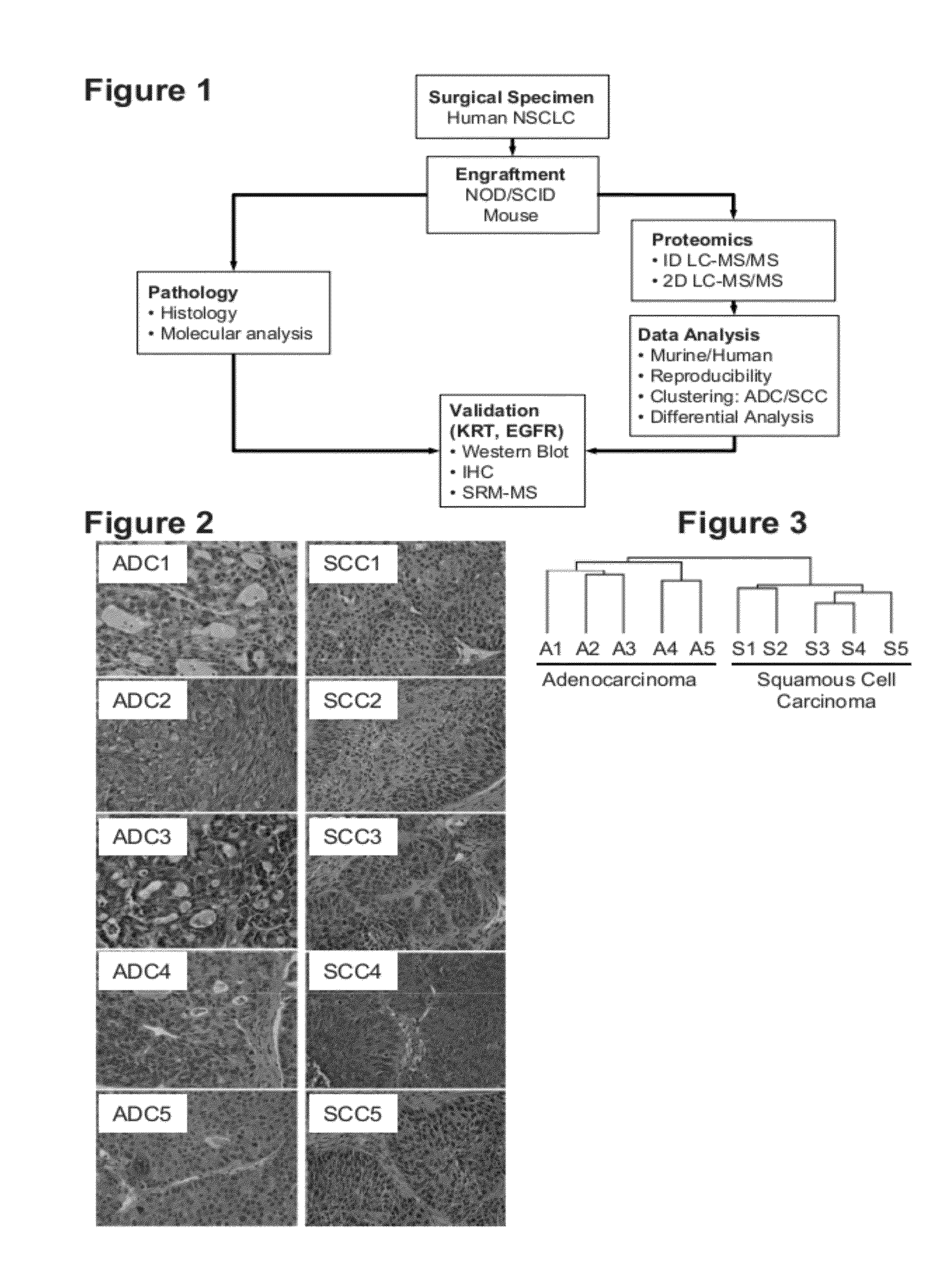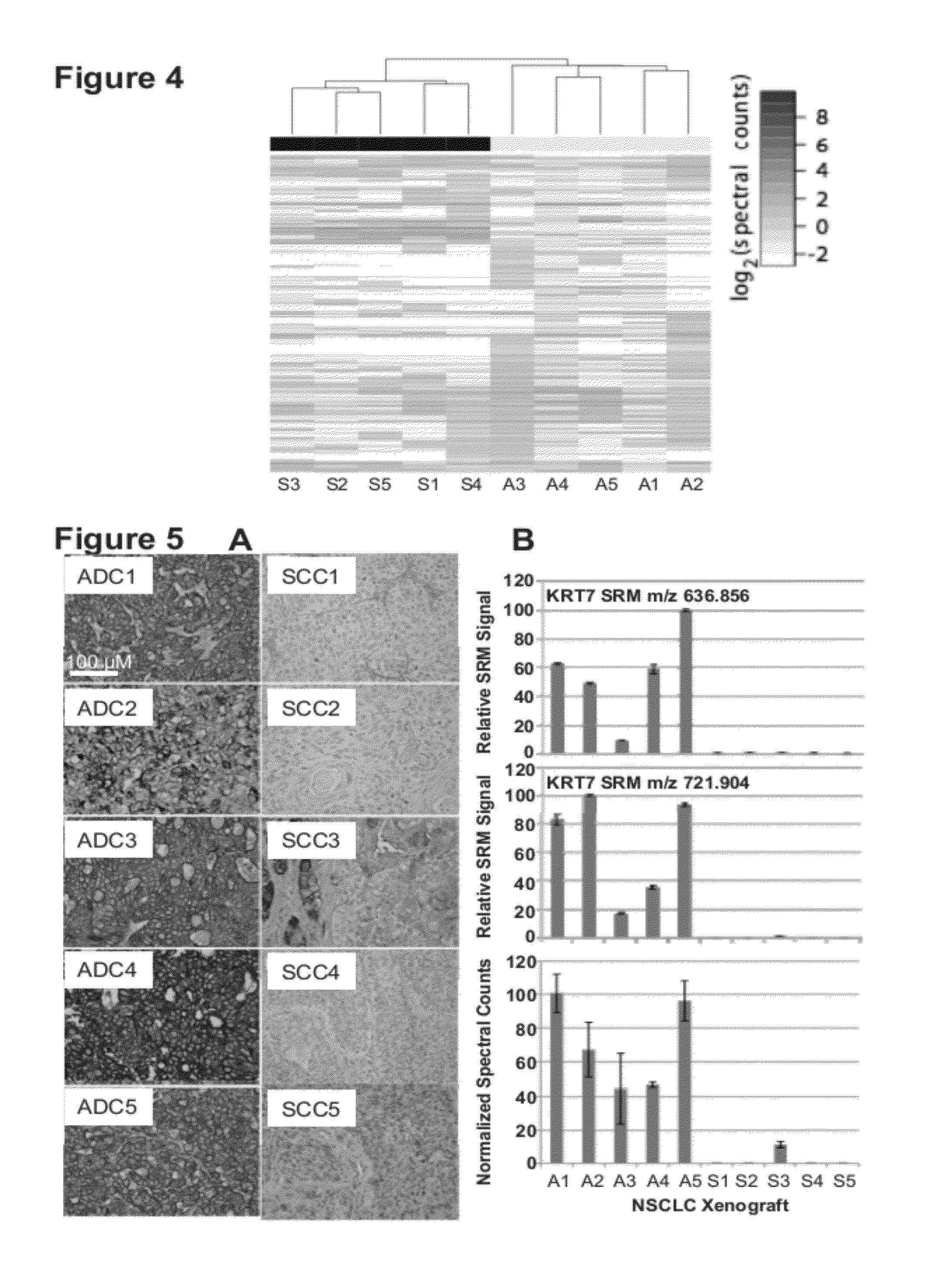Methods and compositions for the classification of non-small cell lung carcinoma
- Summary
- Abstract
- Description
- Claims
- Application Information
AI Technical Summary
Benefits of technology
Problems solved by technology
Method used
Image
Examples
Embodiment Construction
I. Definitions
[0054]The term “difference in the level” as used herein refers to an increase or decrease in the level, or quantity, of a biomarker associated with non-small cell lung carcinoma or a subtype thereof, in a test sample that is measurable, compared to a suitable control and / or reference. For example the difference can be a difference in the steady-state level of a gene transcript, including for example a difference resulting from a difference in the level of transcription and / or translation and / or degradation. The difference in the level is optionally a level statistically associated with a particular group or outcome, for example, a group having non-small cell lung carcinoma or not having non-small cell lung carcinoma. The difference in the level can refer to an increase or decrease in a measurable polypeptide, or fragment thereof, level of a given biomarker as measured by the amount of steady state level of and / or expressed polypeptide or fragment thereof in a test samp...
PUM
 Login to View More
Login to View More Abstract
Description
Claims
Application Information
 Login to View More
Login to View More - R&D
- Intellectual Property
- Life Sciences
- Materials
- Tech Scout
- Unparalleled Data Quality
- Higher Quality Content
- 60% Fewer Hallucinations
Browse by: Latest US Patents, China's latest patents, Technical Efficacy Thesaurus, Application Domain, Technology Topic, Popular Technical Reports.
© 2025 PatSnap. All rights reserved.Legal|Privacy policy|Modern Slavery Act Transparency Statement|Sitemap|About US| Contact US: help@patsnap.com



